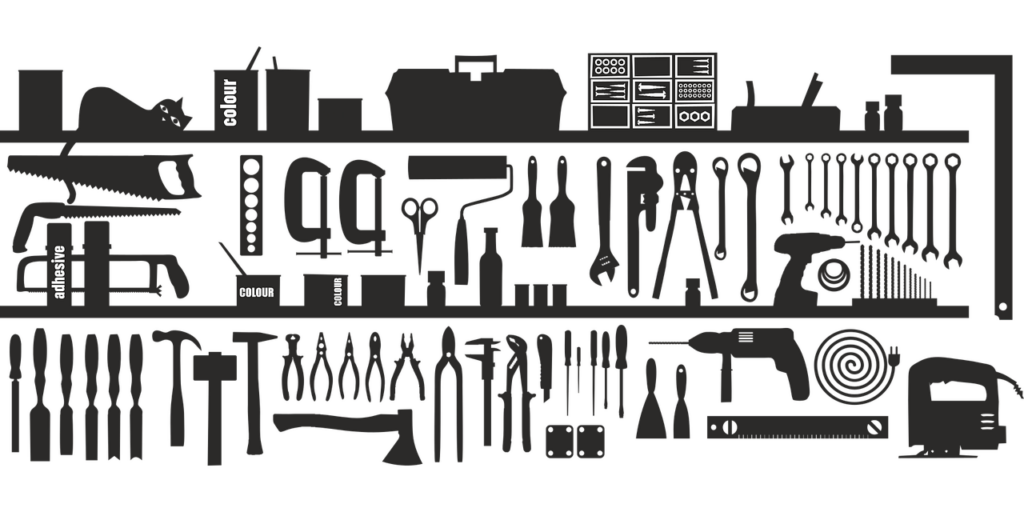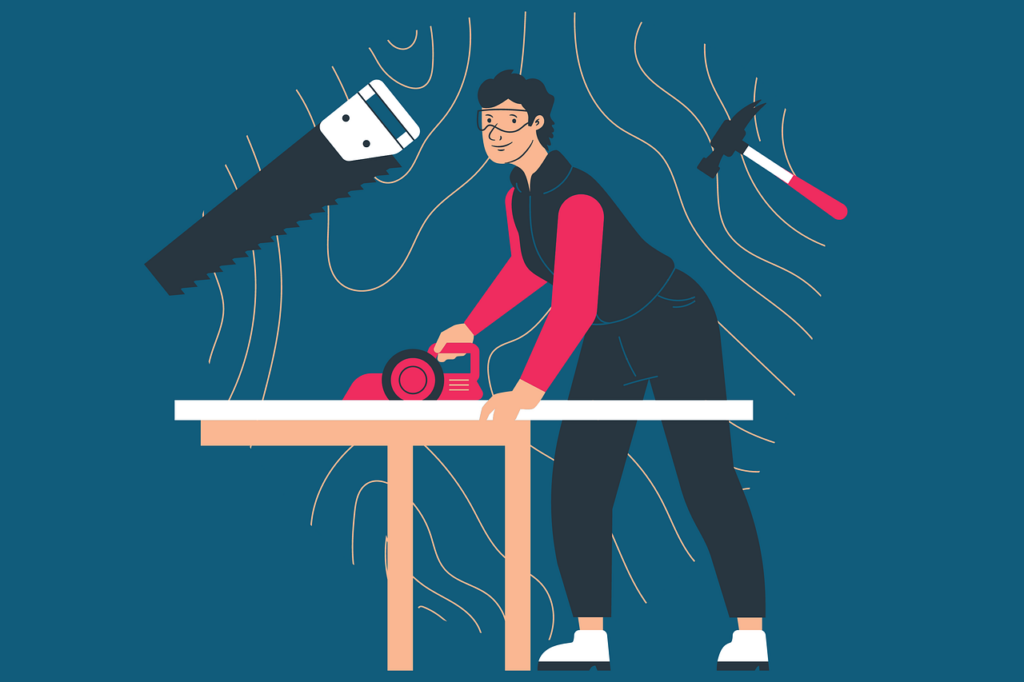Welcome back! Do you think that you can solve every test? Today we have a very difficult one for you! After all, not everyone is familiar with tools. Maybe you are a tool expert? Let’s check it out! Can you identify these tools?
There are some tools that everyone knows. Let’s remind ourselves of their names and uses. Today we will talk about tools – a rather unusual topic. But we will also give some interesting facts about tools, so stay tuned.
Most common tools:

Screwdriver – everyone knows what this tool looks like. It is one of the most known and practical tools. Some women even carry screwdrivers in their purses – just in case. All screwdrivers are good for loosening screws and bolts, in addition, their heads have a groove in the character of a cross, slot, pinion or hexagon.
The most popular is the Phillips screwdriver. It was invented in 1933. American John P. Thompson created a cross-shaped indentation. It was intended to make his work easier. The cross indentation prevented the tool from falling out during assembly.
Hammer – another tool that everyone knows and uses. Hammers are even used in the kitchen, even children have their toy hammers. Judges have their own special hammers. Hammers were among the first tools invented. It is said that primitive people used such tools as early as about 3.3 million years ago. The earliest hammers were simply pieces of stone. In Mesopotamia, on the other hand, the first stone hammers with a handle were developed, for forging copper objects.
Pliers – pliers are very useful tools. They will help us remove a crooked nail, but we will also use them to cut cables during electrical work. With their steel jaws, we can hold a screw nut while unscrewing it, or squeeze or bend a metal object. The first pliers were probably created some 3,000 years ago. They were made of wood. However, an improved version of pliers was created by Tim Leatherman.
Tim, together with his wife, picked his way through Europe. During the nine-month tour, the car broke down many times, and Tim had only a simple pocket knife and a few basic tools with him. On the other hand, there were times when, in addition to the car, you had to fix a broken jacket lock or tighten a pipe in the cheap hostel where they were staying.
Tim wanted a small, handy tool to help him with various problems. That’s why he created the so-called multitool. It was a typical pocket knife combined with pliers. At first no one was interested in his invention. But finally investors became interested in it. Today, several million people around the world carry multitools at their belt, including soldiers, do-it-yourselfers, paramedics, technicians at mass events, sailors and tourists.
Did the Leatherman story interest you? Click here for more!
Saw – another tool that you will find in all workshops and garages. It is a basic multi-tool for cutting wood. With its help you can also work on other materials, such as bone, metal or stone. Working with a saw involves cutting through, undercutting and outwardly removing the scraped material. In the Stone Age, people used knives and axes made of flint to cut various materials.
Very early on, however, they realized that hard substances could be cut much more easily with serrated or notched blades. The saw appeared at least 10,000 BC, as a flint saw with a wide short blade and small teeth set on a wooden base. It was not suitable for felling trees – an axe was used for that goal. So it was only good for minor finishing work.
As an interesting fact, some South American Indian tribes still use tools of a very similar design. Today we have various types of saws, including electric saws. With it, we can easily cut through any object.

Measuring tools – there are quite a few such tools. The most popular is the tape measure. The first steel tapes were patented by James Chesterman in 1829. Historically, the ancient Romans measured distances by the length of a foot. They measured shorter distances by the width of their thumb. A unit called a step was also good for measuring. One thousand steps of a Roman soldier constituted a mile.
In the Middle Ages, two elbow systems were distinguished: the ordinary one, used by merchants and craftsmen, and the other, used by geometers. Today we can measure distance in very precise ways. Especially if we have such tools as laser level or angle gauge. Then any problems with distances are no longer problems.
French key – the French key really wasn’t invented by the French. It was done by two English engineers. It’s a tool that everyone plumber will find useful. It is mostly used to successfully loosen bolts that have a large diameter. Often there is a scale on the wrench, which allows you to determine the precise spacing of the jaws. Professionals say that French wrenches are among the more rugged and durable construction tools, which means maybe not the least, but usually a one-time expense.
Flashlight – a flashlight can also be a tool. Everyone probably knows and owns that device. The first flashlights were shells or shells filled with fat (vegetable or animal) and what was supposed to replace the wick (such as a rolled up leaf). Then came stone, clay or copper lamps filled with oil, and bowls with handles for carrying, ending in a characteristic spout with a place for the wick.
The first candles also appeared – probably having their origin in torches coated with beeswax. At the dawn of the Middle Ages, mankind used olive oil lamps, candles and torches. Later, more modern versions of flashlights appeared. These flashlights were available only to rich people, as raw materials such as kerosene were expensive. Not everyone could afford a portable luminous tool. However, when the battery and light bulbs were invented, already everyone could enjoy the light of a flashlight.
Tools have accompanied humans since the beginning of mankind. Anthropologists believe that the beginning of tool history dates back to the prehistoric period. But the results of recent studies suggest that hominin species were already using stone items. What would humans be without tools? Almost everyone has some sort of useful utensil that can be used for bolting, drilling, hammering and other similar work.
Undoubtedly, the first tools were made of stone. These early stone tools were created at least 2.6 million years ago. At that time, stone tools were mainly used for hunting and lasting. Even in prehistoric times, the first humans used sticks and stones as aids. Even then, they greatly improved the raw materials, for example, sharpening branches to use them as spears. The process of making tools developed in the Bronze Age – when the human race began to develop agricultural practices.
Power tools are tools that operate through electric propulsion. The invention of power tools greatly accelerated the development of tools, because with power tools, then and now, many jobs could be done first, or at least faster and more efficiently. The first modern power tools were developed in the second half of the 19th century. It was during this time that the first electrical machine shops and general power company were established. From then on, there was a rapid development of tools.
Give our Tool Test a try. Now you’re ready. Remember, however, that our test has a very difficult level. It will be interesting to see if you can recognize all 20 tools we’ve picked out. Send this Tools Trivia to your friends so you can compare your scores. Who of you is a tool expert? Can you recognize these tools? Can you name these tools? We will see!

Another challenging test? Take the Can You Name The Cocktail Test or the Can You Recognize These World’s Strangest Fruits Test!